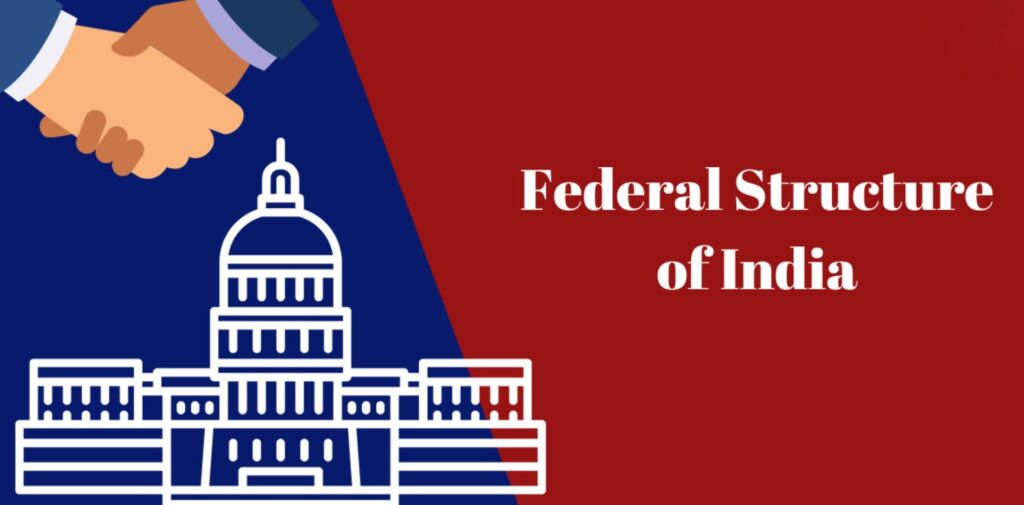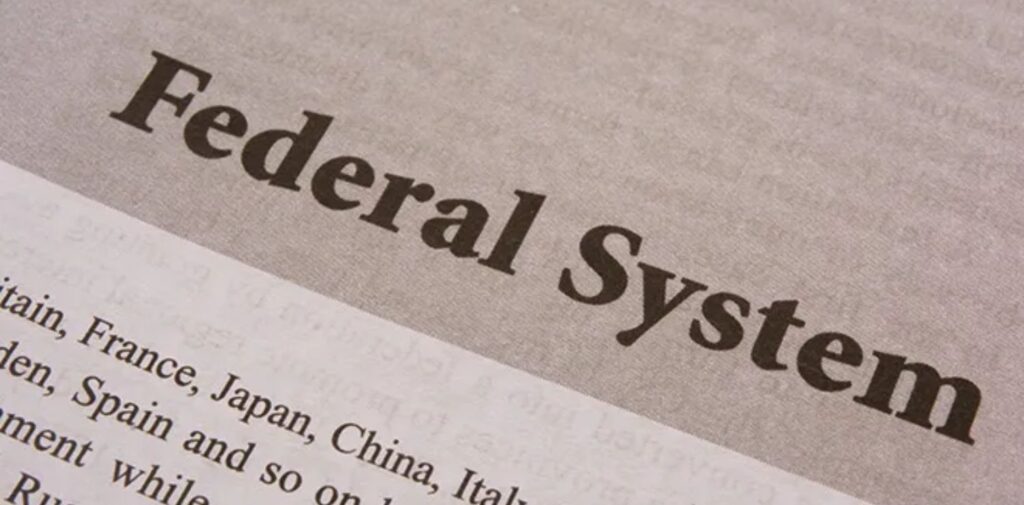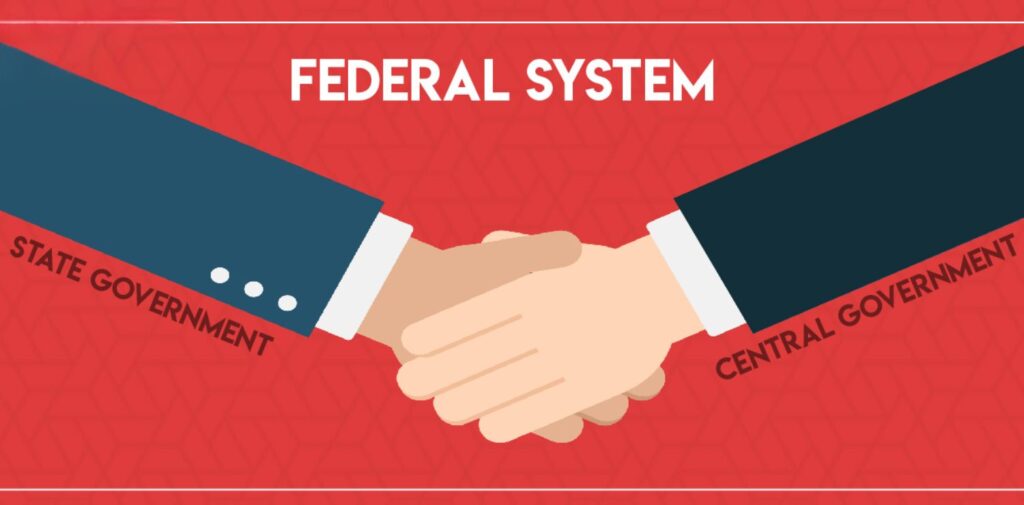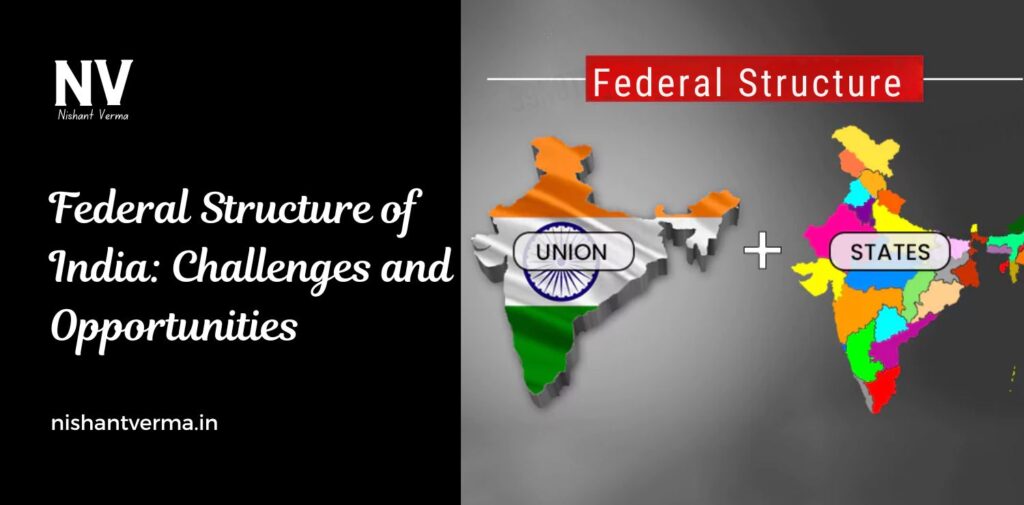India is a large and diverse country with many different languages, cultures, and regions. To manage such a vast and varied nation, India follows a federal system of government. This means that the country is divided into different levels of government that share the power. These levels include the central government (also called the Union government) and state governments. Each state has its government that handles certain issues, while the central government takes care of matters that concern the entire country.
The federal structure of India helps in managing the country’s diversity and ensuring that people from all parts of the country have a say in how the country is run. However, this system also comes with its own set of challenges and opportunities. Let’s explore both aspects of India’s federal structure in simple terms.
What is the Federal Structure?
In a federal system, power is shared between two levels of government: central and state. Each level has its responsibilities. The central government deals with matters that affect the whole country, such as defence, foreign relations, and national security. On the other hand, state governments handle matters that are specific to their region, such as education, healthcare, and law enforcement.
The Constitution of India defines the powers of both the central and state governments. The Constitution also lists the subjects on which each government can make laws. These subjects are divided into three lists:
- Union List: Matters that only the central government can legislate on, such as defence and foreign affairs.
- State List: Matters that only state governments can legislate on, such as police, public health, and agriculture.
- Concurrent List: Matters that both central and state governments can legislate on, such as education, criminal law, and trade.

Challenges of India’s Federal Structure
While the federal structure is designed to allow different regions to have a say in governance, it comes with some challenges:
- Disagreements Between Central and State Governments: One of the major challenges in India’s federal system is the disagreements between the central and state governments. Sometimes, the central government and the state governments may have different opinions on how a certain issue should be handled. For example, the central government might want to implement a national policy, but the state government may feel that it is not suitable for their region. These differences can create conflicts and slow down decision-making.
- Unequal Development: India is a very diverse country, and some states are more developed than others. Unequal development is a significant challenge in India’s federal structure. While some states, like Maharashtra, Gujarat, and Tamil Nadu, are economically advanced, others like Bihar, Uttar Pradesh, and Odisha face challenges such as poverty and lack of infrastructure. This gap in development can create tensions between richer and poorer states, with the poorer states feeling neglected or left behind.
- Political Tensions: India has many different political parties, and these parties often have different views on how power should be shared between the central and state governments. Sometimes, political parties in power at the central level may belong to a different party than those in power in individual states. This can create political tensions between the state and central governments, which may lead to difficulty in cooperation and governance.
- Regional Demands for Autonomy: Some regions of India have special cultural, linguistic, or historical identities. There have been demands from some of these regions for greater autonomy or even independence. For example, certain states in the northeast, like Nagaland or Kashmir, have raised concerns about their unique needs and have asked for more power to be given to them. These demands challenge the federal system and can sometimes lead to unrest or violence.

Opportunities in India’s Federal Structure
Despite these challenges, India’s federal structure also provides many opportunities that help the country remain united and strong:
- Accommodation of Diversity: India is home to many different languages, religions, cultures, and ethnic groups. The federal system allows each state to govern in a way that suits its unique needs and challenges. For example, states like Punjab have their own set of policies that cater to the local population’s needs, such as language policies and agricultural practices. This helps keep people from different regions happy and ensures that they feel heard.
- Local Representation: The federal system ensures that every state has its government and legislature. This provides local representation for people in every part of the country. Citizens have the opportunity to vote for leaders who understand their local issues and can address them better. For example, state governments can focus on issues like healthcare, education, and infrastructure that are specific to the needs of their people.
- Encouragement of Healthy Competition: India’s federal structure encourages healthy competition among states. States try to outdo each other in terms of economic growth, infrastructure development, and social welfare. For example, Kerala is known for its excellent healthcare system, while Gujarat is known for its business-friendly policies. States can learn from each other and adopt policies that work best for their development.
- Flexibility for Regional Solutions: The federal system allows states to experiment with different policies that are suitable for their region. For example, some states may focus on promoting agriculture, while others may focus on improving technology and industry. This regional flexibility allows for innovative solutions that are specific to the local environment and needs.
- Peaceful Resolution of Disputes: While conflicts between the central and state governments are a challenge, the federal system also provides a platform for the peaceful resolution of disputes. There are constitutional bodies like the Finance Commission and the Inter-State Council that help in resolving disagreements. These bodies work to ensure that both the central and state governments can cooperate and work together for the country’s development.

Ways to Strengthen India’s Federal System
To overcome the challenges and make the federal system work better, several measures can be taken:
- Improved Cooperation Between Central and State Governments: Better cooperation and communication between the central and state governments can help resolve many conflicts. Both levels of government need to work together for the welfare of the people. Joint efforts in areas like education, healthcare, and infrastructure can lead to better outcomes.
- Equal Development Across States: The government can work to reduce the development gap between rich and poor states by focusing on inclusive growth. States that are lagging should receive more resources and attention to improve their economy and living conditions. This will help reduce feelings of neglect and create a more balanced development.
- Addressing Regional Demands: The central government should listen to the demands of regions seeking greater autonomy or special rights. While maintaining the unity of the country, the government can provide solutions that satisfy the concerns of different regions. For example, creating special policies for states with unique cultural identities can help maintain peace and harmony.
Conclusion: Federal Structure of India
The federal structure of India is a dynamic system that brings both challenges and opportunities. While there are difficulties in managing such a large and diverse country, the system provides a way for different regions to have a say in their governance and development. With better cooperation, a focus on equal development, and addressing regional concerns, India can continue to thrive as a united and prosperous country.
The federal structure is a key feature of India’s democracy, ensuring that every citizen, whether from a small village or a big city, can participate in shaping the country’s future. Through continued efforts, India can overcome the challenges and make the most of the opportunities offered by its federal system.




